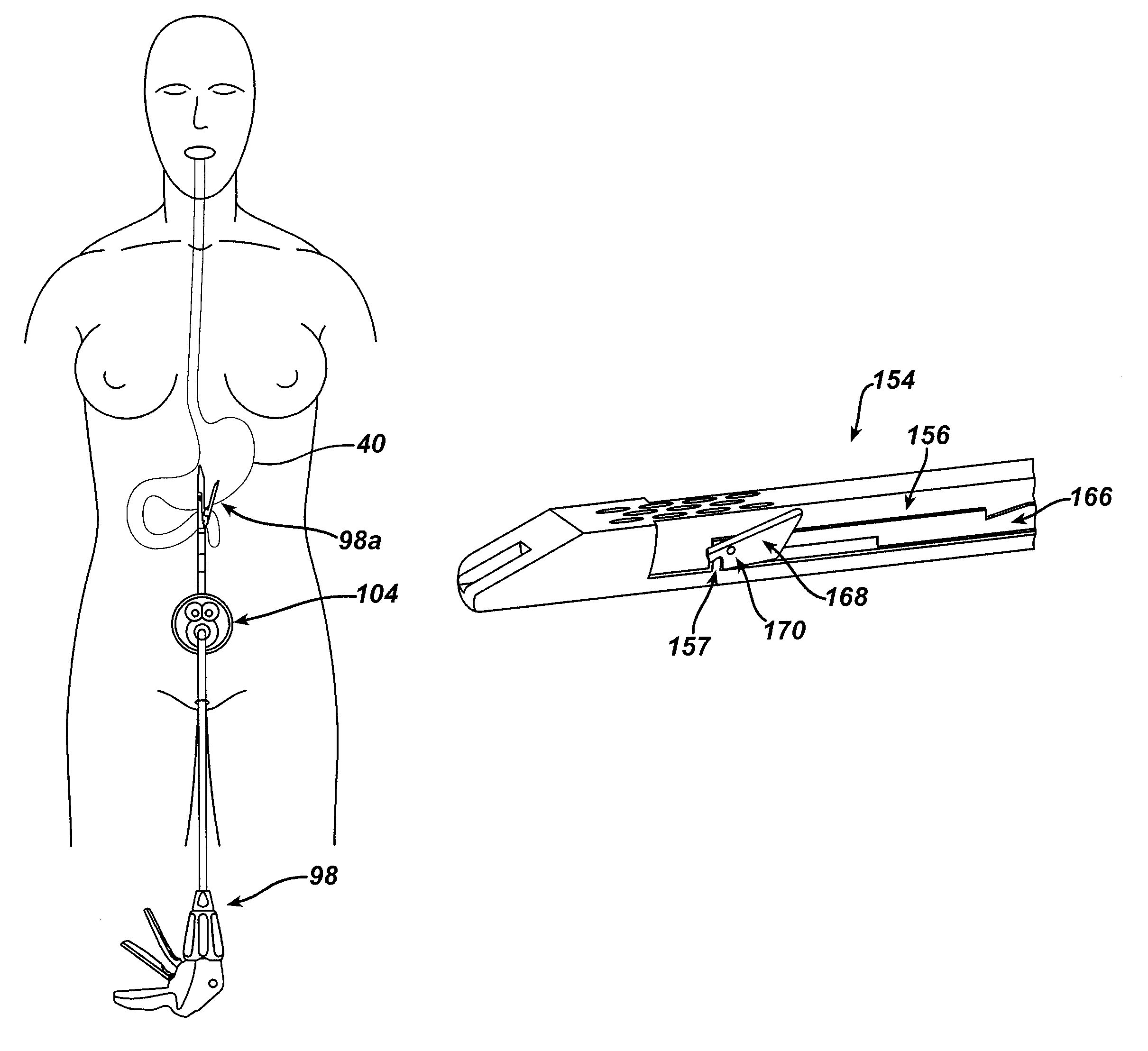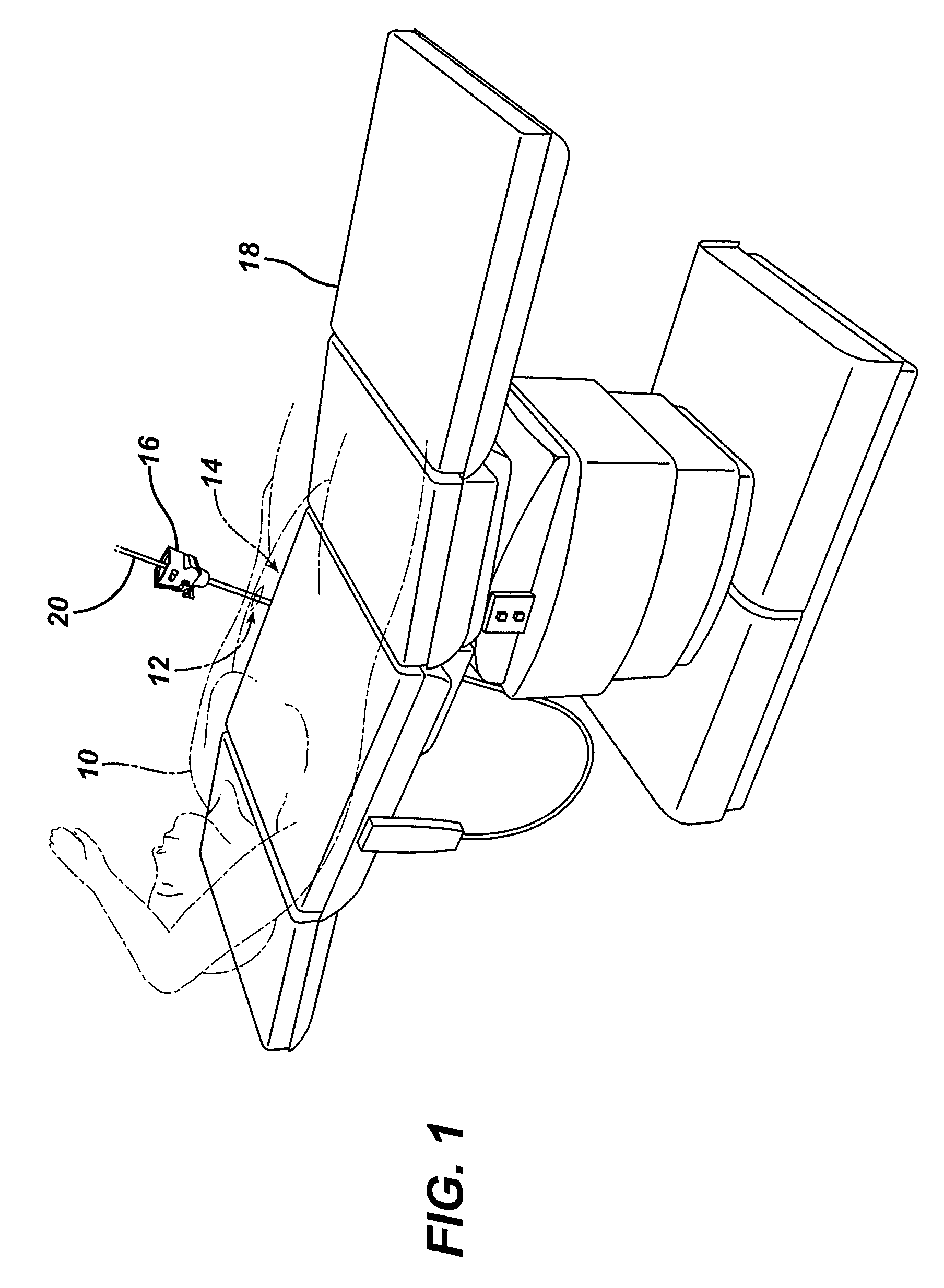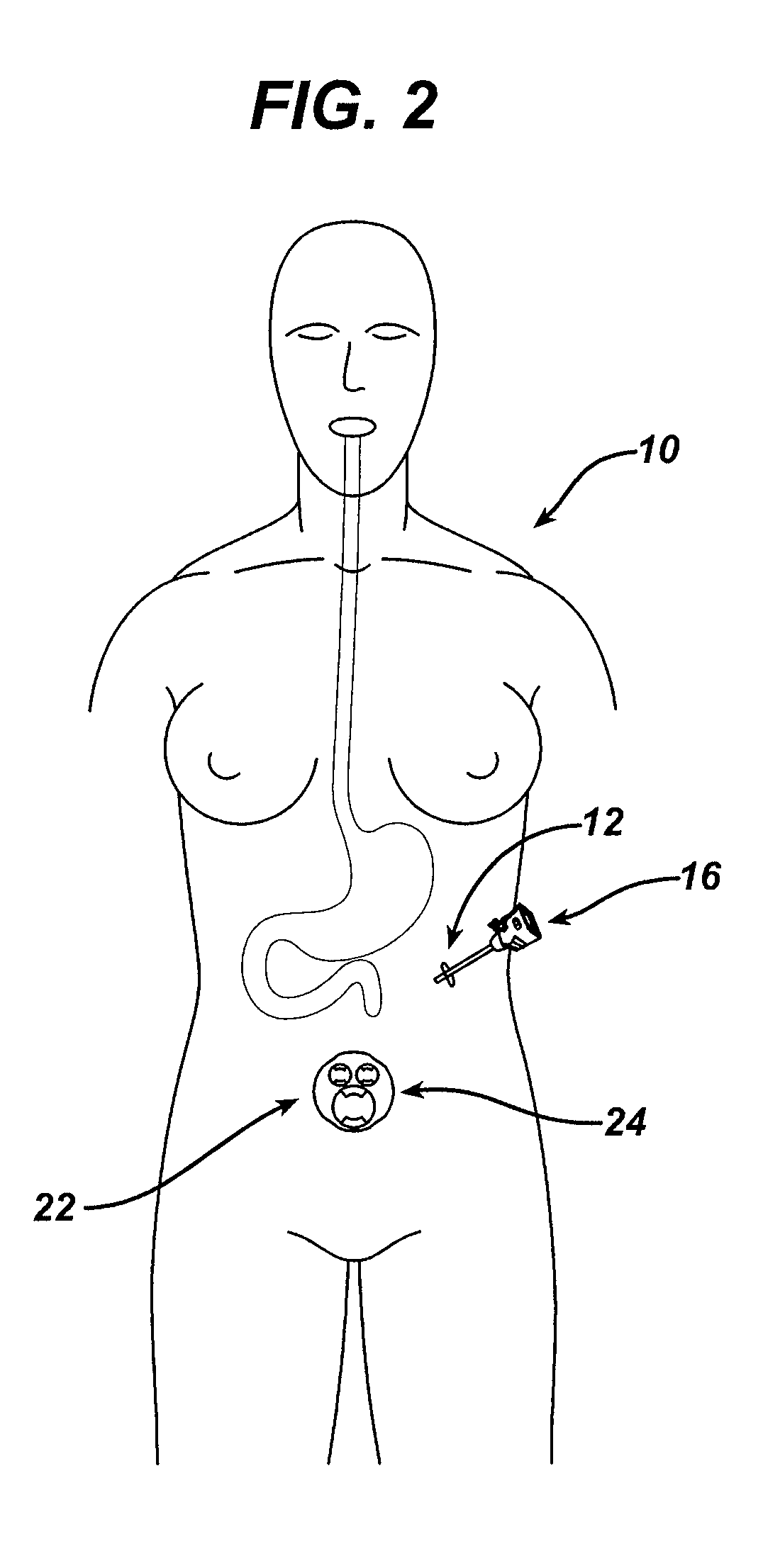Methods and devices for cutting and fastening tissue
a tissue and fastening technology, applied in the direction of surgical staples, applications, surgical instrument support, etc., can solve the problems of cosmetic scarring, increased chance of undesirable post-operative consequences, and significant risks for severe health problems
- Summary
- Abstract
- Description
- Claims
- Application Information
AI Technical Summary
Benefits of technology
Problems solved by technology
Method used
Image
Examples
second embodiment
[0111]FIGS. 17-22 partially illustrate a transector having a proximal cut-free and fastener-free region where tissue engaged adjacent the proximal region is not cut or fastened. In this illustrated embodiment, a transector component that can be partially or fully removably and / or fixedly attached to any transection device includes a staple cartridge 128 and a cutting assembly 130. As will be appreciated by a person skilled in the art, the staple cartridge 128 and the cutting assembly 130 can each have a variety of configurations and can each include more or fewer elements than those shown. The cartridge 128 is similar to the cartridge 112 of FIG. 16 and has a tissue-contacting surface 132, a distal cutting / fastening region 134, a proximal cut-free / fastener-free region 136, and a longitudinal slot 138 extending between distal and proximal ends 140, 142 of the tissue-contacting surface 132 through which at least a portion of the cutting assembly 130 can at least partially translate. G...
third embodiment
[0114]In a transector having a proximal cut-free and fastener-free region illustrated in FIGS. 23-28, a staple cartridge 154 has a longitudinal slot 156 extending through the cartridge 154 but extending through a tissue-contacting surface 158 of the cartridge 154 along only a partial longitudinal length thereof in the cartridge's distal cutting / fastening region 162. The cartridge 154 is otherwise similar to the staple cartridges discussed above with the distal cutting / fastening region 162 and a proximal cut-free / fastener-free region 164. At least a portion of a cutting assembly 160 can at least partially extend through the slot 156 as the cutting assembly 160 moves through the cartridge 154. By having a slot 156 in the distal region 162 but not in the proximal region 164, the cutting assembly 160 cannot extend through the slot 156 to cut tissue except in a distal region 162. Because the tissue-contacting surface 158 in the proximal region 164 can be a continuous solid surface withou...
PUM
| Property | Measurement | Unit |
|---|---|---|
| body weight | aaaaa | aaaaa |
| diameter | aaaaa | aaaaa |
| outer diameter | aaaaa | aaaaa |
Abstract
Description
Claims
Application Information
 Login to View More
Login to View More - R&D
- Intellectual Property
- Life Sciences
- Materials
- Tech Scout
- Unparalleled Data Quality
- Higher Quality Content
- 60% Fewer Hallucinations
Browse by: Latest US Patents, China's latest patents, Technical Efficacy Thesaurus, Application Domain, Technology Topic, Popular Technical Reports.
© 2025 PatSnap. All rights reserved.Legal|Privacy policy|Modern Slavery Act Transparency Statement|Sitemap|About US| Contact US: help@patsnap.com



